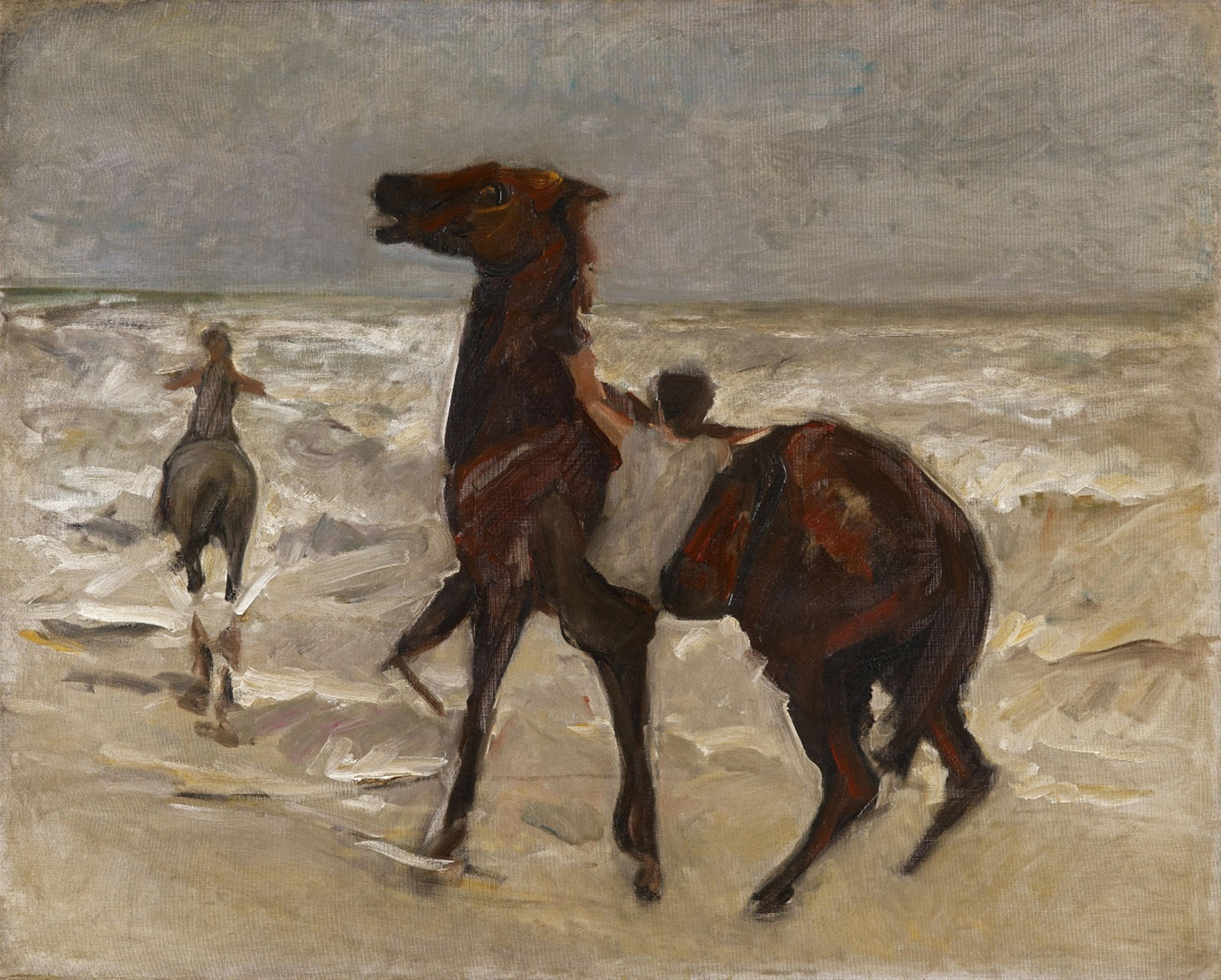Max Liebermann
Pferdeknechte am Strand
Circa 1909
Oil on canvas 70.8 x 88.3 cm Framed. Unsigned. - A short, professionally closed tear to the left margin at horizon height.
Max Liebermann began regularly spending his summers along the Dutch coast of the North Sea as early as 1872. In doing so the artist followed the French Impressionists, who had established the motif of the summer stay at the seaside. Liebermann arrived at his paintings of riders not least through Isaac Israels, with whom he painted horses in motion for the first time at the beach of Scheveningen in the summer of 1900. Just a few months later, Liebermann summarised this period in a letter to Franz Servaes: “With regard to me personally, I have entered into a new […]period: in the three months that I was just now in Holland, I shed my skin once more, paint horses [...].” (letter to Franz Servaes of 14 Oct 1900, in: Max Liebermann, Briefe, vol. 2, ed. by Ernst Braun, Baden-Baden 2012, p. 366).
Matthias Eberle also describes Liebermann's work from around 1900 as defined by a stylistic change and new motifs: “Scenes featuring movements become particularly fruitful: preferably movements that, if they do not show people battling with nature, at least emphasise that they must summon up effort and strength in striving to subject nature to their will. This is exemplified by dozens of paintings like 'Reiter am Strand' - where most of the riders peacefully go their way - soon developing into the motif of the 'taming of the horses', which start with fright at the breaking waves and want their riders to guide them. ” (Matthias Eberle in his expertise). Liebermann's depictions of horses from the early 20th century are defined by people's intense and strenuous struggle with the animal. This struggle corresponds to the element of the painter's exertions while searching for the right artistic formulation: “He [Liebermann] therefore repeatedly drew horse tamers, regardless of whether they are boys or grown men, and in revising and elaborating upon this motif in his paintings, he arrived at a new formal idiom that is unknown from his previous work and which is no longer found after the period from 1909 to 1912.” (ibid.)
The present work impressively demonstrates the power of conviction with which Max Liebermann was able to capture living nature in its unique character and transfer it into a painted image. As an emblem of his own creative process, the motif of the horse tamers certainly also provides us with special insight into Liebermann's artistic self-concept.
Catalogue Raisonné
Not recorded by Eberle
Certificate
With a photo-expertise by Eberhard Hanfstaengl in Munich dated 21 January 1972
With an expertise by Matthias Eberle, Max Liebermann-Archiv, Berlin, dated 19 April 2016. The work will be included in the supplement to the catalogue raisonné under the no. "1909/14a".
Provenance
Collection of Sir Kenneth Clark, K.C.B., London (1938); Galerie Gunzenhauser (1972); purchased there from the present owner, private possession since, Rhineland
Exhibitions
London 1938 (New Burlington Galleries), Exhibition of Twentieth Century German Art, cat. no. 151; San Francisco 1940 (San Francisco Museum of Art), 20th Century German Art, 6 February - 26 February 1940 (label on the stretcher, "No. 1061"); New York 1940 (Museum of Modern Art), permanent loan, 2 October 1940 - 28 December 1945 (label on the stretcher, "Clark" also listed as a lender)

